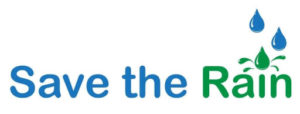Sustainability at the MOST
Presented by National Grid, the MOST will be featuring sustainable activities to support the environment. The activities will allow children of all ages to explore ways they can reduce their carbon footprint, be more environmentally mindful, and take care of the earth!
Activities
Sustainability: Presented by National Grid
Renew a Bean
Mini Rain Barrel
Sun Power:
How do solar panels work to provide sustainable energy? Try out our “Sun Power” experiment, and find out about the power of solar energy for yourself!
Recycled Paper
Water Wheel
The Life History of Stuff:
Pick a food item to research and learn more about where it comes from, how it grows, and how it got to you!
Gardening and Composting
For all ages or as a family, explore Gardening & Composting!
Sorting
For young children or as a family, learn the basics and practice recycling with our Sorting Recycling activity.
Presented by:

Pollution
Wandering Waters
See our “Water Pollution” video below.
Pesticide Pollution
See our “Land Pollution” video below.
Greenhouse in a Beaker
Make a greenhouse in a beaker and record the results!
Colored Celery
Plants rely on the water in the soil to thrive — but how do they transfer water from the ground to the rest of the plant? Explore the process (and what can happen if pollutants get into the groundwater) in this simple plant science activity. Observe the experiment over a few days and record your results, then discuss the importance of clean water!
Carbon Footprint
For adults or as a family, calculate your CARBON FOOTPRINT and spend an hour without power to start enacting change!
Filtering Water
Did you know that over 7,500 trees have been planted in our community through the Save the Rain program? Trees are crucial for our water cycle because they soak up and filter stormwater, which reduces the amount of runoff entering the sewer system! Try out the MOST’s Plant Filter activity to explore how trees and other plants do the work of water filtration, and visit Save the Rain to find out more about Onondaga County’s award-winning initiative to improve the water quality of Onondaga Lake and its tributaries.
Oil Spill Cleanup
Oil leakage and spills are especially harmful for the environment – in part because the pollutants are so hard to clean up! Learn about the challenge of cleaning up after an oil spill, and explore methods for dealing with this kind of environmental disaster!
Nature Observation & Exploration
Homemade Anemometer:
Springtime can bring strong winds – and what better way to know exactly how fast they’re blowing than by using your own homemade weather instrument? Follow our simple directions to make a DIY Anemometer – plus, check out the one we 3D printed!
Self-Watering Pot:
It’s Gardening Season! Follow our instructions for making a “self-watering” pot that waters plants through the power of capillary action! Adult supervision is recommended – perfect for families spending time in the backyard!
Rain Cloud in a Jar
When it rains, it pours! One important part of the water cycle is precipitation — when water is released from clouds in the form of snow, hail, or rain! Check out the science of clouds and how they “make it rain” in this Rain Cloud in a Jar Activity, and find out more about precipitation and the water cycle from our friends at Save the Rain.
Nature Journal
There are so many ways for kids to explore the natural environment, even from their own backyard! Head outside as winter turns to spring, and bring the MOST Nature Journal to record what you discover! Kids will learn basic scientific skills like observing and recording data, while directing their own learning (and spending some time outdoors!).
Printable/Editable Nature Journal
Make a Bird Feeder
A healthy environment and clean water allow a wide variety of plant and animal species to thrive! And as spring approaches, there are so many ways to explore those species even from your own backyard. Make your own bird feeder using our activity instructions, then observe and record the birds your feeder attracts! And don’t worry — if you don’t have bird seed, you can use raisins, apples, stale bread, rolled oats, or other non-spoiled kitchen scraps. Learn more about the birds you see (and many others!) in the Cornell Lab of Ornithology Online Bird Guide — which has interactive bird identification tools, live bird feeds, learning games, and more.
Earth Month Videos: Presented by Save the Rain
Presented by:


